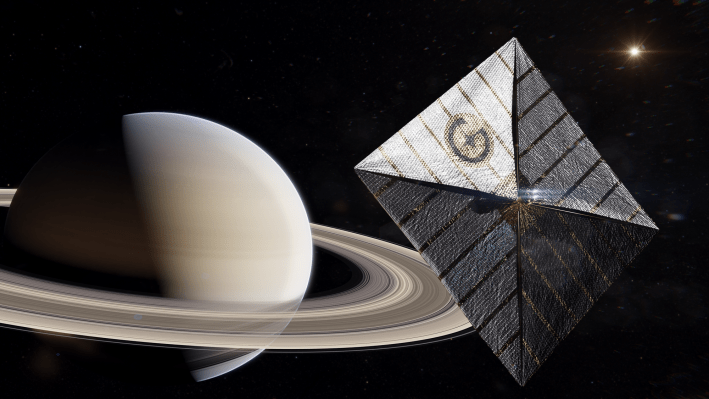
Just as sea breezes propel sailboats across the sea on Earth, solar radiation might one day be able to propel spacecraft between the stars. Or at least that’s the hope of French start-up Gama.
The aerospace company was founded in 2020 by Louis de Gouyon Matignon, Thibaud Elziere, and Andrew Nutter, whose goal is to develop a low-cost solar sail that would use light as a means of propulsion for spacecraft. Gama has collected 2 million in funding from the French Public Investment Bank (BPI), the French Space Agency (CNES), and angel investors to demonstrate its technology in space in October. That mission will see a CubeSat launched on a SpaceX Falcon 9 rocket, after which a 789-square-foot solar sail will deploy at an altitude of 342 miles.
“We can test a lot of things on earth, but testing deployment at these dimensions can only be done in the zero gravity of space,” Nutter tells TC. (The dimensions suggest the sail should be about 10 meters across.)
Solar sails are not exactly a new invention. They were first theorized by astronomer Johannes Kepler, who mused about them in a letter to fellow astronomer Galileo Galilei in 1608. But the first successful deployment of a solar sail didn’t occur until 2010: the IKAROS “space yacht,” a mission by the Japan Aerospace Exploration Agency (JAXA). That same year, NASA launched NanoSail-D, and in 2019, the space advocacy group Planetary Society launched LightSail 2.
Now multiple organizations apart from Gama are developing new solar sail missions. NASA’s Advanced Composite Solar Sail System (ACS3) will have Illinois-based NanoAvionics design a spacecraft with an 800-square-foot solar sail. Breakthrough Initiatives’ Breakthrough Starshot mission, which has received $100 million in funding, plans to send a fleet of hundreds of tiny solar sail–powered spacecraft to the star system Alpha Centauri, located 4.7 light years away.
Gama differs in two ways from previous and current missions. “First, the team at Gama strives to iterate and move extremely fast, launching the first of many solar sails in record time,” says Nutter. “Second, we are deploying the sail by gently spinning the satellite, and using the resultant centrifugal force to deploy the petals of our sail. This allows us to save on structural weight and deploy much larger surfaces in due course.”
Well ahead of its first launch, the company is already designing its second mission — one that will deploy at higher altitude and will “demonstrate we can steer the sail and provide a reliable low-cost alternative to traditional propulsion technologies,” per Nutter.
Solar sails operate almost identically to traditional sails, except that they use photons for propulsion rather than the air molecules making up the wind. Though photons don’t have mass, their momentum as they travel through space can be transferred to a reflective surface — a solar sail made of Mylar or a polyamide— which can propel a spacecraft. The force is slight, but in the vacuum of space, it can add up quickly. It’s possible that a solar sail could propel a spacecraft to 20 percent of the speed of light — though it would take a while.
This would allow spacecraft to eliminate (or at least reduce) the amount of propellant it needs to carry, freeing up mass aboard for other uses. Using solar sails could also prolong the mission duration of a spacecraft, since the vehicle could theoretically could be propelled indefinitely. This would be crucial for long-duration deep-space missions, which explains why there’s such an interest in developing the technology further.









